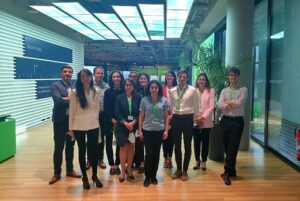When I introduce myself to others, I often wish my job title were simpler. After all, “Chief Strategy and Sustainability Officer” (CSSO) is a bit of a mouthful. Still, it’s great to be part of a group of people, whose ranks have more than tripled over the last decade as environmental considerations have climbed up the corporate agenda.
It’s not just that legislation around the globe has pushed corporate environmental, social and governance (ESG) action forward – or that investors, customers and employees expect companies to do more on those fronts. CEOs themselves now recognize ESG as both a business imperative and growth driver. A recent study from the IBM Institute for Business Value powerfully highlighted this point.
No wonder: After all, companies that actively drive and transform their business with positive environmental and social impact in mind are likely to prove more successful and resilient, and to generate more shareholder value in the medium- to long-run. Sustainability is their passport to operate into the future.
Being an impact company: Interweaving strategy and sustainability is hard but not impossible
Paul Polman, the former CEO of Unilever and a prominent campaigner for corporate responsibility, refers to companies that have embraced an impact company mindset as “net positive”.
Behind my “CSSO” job title stands the notion that companies that truly want to have a lasting positive impact must synchronize sustainability and strategy. They have to ensure that sustainability considerations don’t just inform what they do, but that they drive corporate decision-making.
Believe me, that’s no mean feat. But neither is it impossible.
Take the decision we took to launch our unique Green PremiumTM program in 2008 to provide more sustainable products and be transparent with environmental information with our customers. Today, 78% of our product sales come from this program, and we plan to reach 80% by 2025.
In the past few years, we’ve also evolved the program to integrate Schneider’s EcoDesign WayTM 1 process and green value proposition. For example, we have a “take-back” program that’s collected over 14,000 tonnes of batteries globally for recycling from customers.
Strategic shifts and initiatives like these are not easy, and they take years to execute. Having a combined strategy-and-sustainability structure in place makes it far easier to ensure they’re planned and executed holistically – reaping synergies and generating maximum impact for the company and its stakeholders.
And having the strategy and sustainability remits under one “CSSO” umbrella helps do this by unifying a company’s organizational set-up.
Take another example. In 2021, we launched the Zero Carbon Project to help our top suppliers halve their CO2 emissions in less than five years. We couldn’t have initiated such an impactful project if we hadn’t been able to bring together our various experts on the environment, decarbonization, digital services and more.

All this is part of a far bigger transformation for Schneider Electric. A decade or two ago, we were a hardware-focused engineering company. Now, we’re a technology company focused on services and software solutions that deliver efficiency and sustainability in office buildings, factories, data centers, infrastructure, private homes and more – thus addressing a major source of global carbon emissions.
We’re also regularly recognized for our ESG performance. This is anchored in our comprehensive net-zero science-based targets and an ambitious impact plan for 2025 that includes saving 800 million tons of CO2 emissions for our customers by that time.
Being an impact company: Front, center and together

A big part of my everyday job is to liaise with my business and operations counterparts to help them support the decarbonization journey of our customers and supply chain partners. The demand from them for sustainability advice has never been higher – and we’ve developed our talent base and capabilities accordingly.
The same goes for the work we do with international organizations, policy makers, and climate and energy experts. To meet their demand for insights from us – as a solution provider, a sustainability expert, and an impact company – we set up the Schneider Electric Sustainability Research Institute, whose in-depth reports inform and guide the global and regional policy debate.
The challenge and opportunity for impact companies lies in continuously engaging with and mobilizing internal and external stakeholders. To that effect, we recently launched a sustainability school for employees, and issuedthe first sustainability-linked bonds to investors and shareholders.
Our Access to Energy business and education program helps millions of people obtain better living standards and work opportunities, and we also have local ESG commitments in the more than 100 markets we’re present in.
Being an impact company CSSO: It’s not simply about the job title
There’s so much we can do. My job is to help turn impactful ideas into actual programs – and straddling both the Strategy and Sustainability remits allows me to do this, by ensuring that our purpose, mission and values are not just a side-show, but that they infuse and drive every aspect of business strategy.
At the end of the day, companies that want to do good must also do well – and vice versa. And they need to bring everyone along on this journey.
That’s what being an impact company is all about. And those are the principles I will keep following. It’s not about the job title – it’s about working with the like-minded people around me to make a lasting positive impact on the planet and society.
Gwenaelle is Chief Strategy & Sustainability Officer of Schneider Electric and has been a member of the Executive Committee since April 1, 2022. Gwenaelle leads the development of Corporate Strategy, Mergers & Acquisitions and Divestment activities, Sustainability, and Customer Satisfaction & Quality.
1 EcoDesign WayTM is the Schneider Electric dedicated process to ensure environmental performance is embedded into our Offer Creation Process (OCP).



